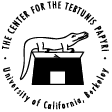 Coptic Unicode
Coptic Unicode Coptic Unicode
Coptic UnicodeIn support of its own research and publication efforts and to serve other papyrologists and Egyptologists, the Center for the Tebtunis Papyri is pleased to make available tools for entering Coptic characters in accordance with the Unicode standard. This document and the downloadable keyboards and font are the work of Donald Mastronarde, who also supports polytonic Greek Unicode input and fonts for Mac OS X through the GreekKeys package of the American Philological Association. CTP also makes available a free input (Mac or Windows) for transliterated Demotic Egyptian.
Prior to Unicode version 4.1 (2005), it was assumed that Coptic would be entered using the Greek alphabet as encoded in the Greek and Coptic block of Unicode (starting at U+0370). Some Coptic characters derived from Demotic Egyptian were assigned codepoints U+03E2-03EF. With Unicode 4.1, a separate block was added containing the whole alphabetic sequence and some dialectical variants: the block is named Coptic and starts at U+2C80. Thus it is no longer expected that Greek codepoints will be used. Charts of the two blocks can be downloaded as PDFs from the Unicode site.There are, however, some difficulties in working with the codepoints from Unicode 4.1. First, very few fonts yet contain them. (They are in the free font New Athena Unicode.) Second, in Word for Windows, the default keyboard commands sometimes interfere with the use of a customized keyboard. Third, Word 2003 takes a shortcut through an obsolete character table (rather than using the complete and extensible Unicode cmap table found in a modern font) and so is unable to automatically show Unicode 4.1 characters in its Insert Symbol... palette. But if you specify the font and enter the codepoint in the palette, it will show the character; or you can use the ALT-x utility (described below).
The basic Coptic characters are now available in Unicode 4.1. But what of the diacritics that are used in Coptic manuscripts and papyri and are sometimes imitated in printed texts? These need to be represented by other Unicode codepoints, those for combining marks, which are entered after the character to which they apply. In some applications, the positioning of the marks will be less than satisfactory, although that situation will gradually improve as more fonts incorporate smart features and (most important) as revised applications actually take advantage of the smart features rather than ignoring them (as Word for Windows and for Mac OS X currently does). Sometimes a diacritic that is badly positioned by Word is correctly positioned when imported into Adobe InDesign, which does respect smart features in modern fonts.
Here are the choices made for the punctuation and diacritics used in modern printing of Coptic texts:
It is easier to enter Coptic Unicode characters if one has a customized keyboard, but it is also possible to enter any four-digit hexadecimal codepoint that you know using particular utilities in Mac OS X or Windows. In Mac OS X, you can use the Character Palette (which can be made accessible in the System Preferences International pane for Input Menu) to locate and insert a character. Or you can activate the Unicode Hex input (in the same System Preference pane) and hold down the option key continuously while typing the four digits. In Word for Windows, you can type a four-digit code (or a five-digit code) directly into your document and then type ALT-x, which converts the code to the character: see the tips about other methods. (Click here for information on other Windows utilities for Unicode.)
Coptic Unicode input for Mac OS X
Download this for use with Mac OS X. The archive contains "coptic.bundle" (which is to be manually installed) and a document explaining installation and use. Remember that you need to have a font that contains Unicode 4.1 Coptic, for example, free New Athena Unicode font.
December 29, 2011: new version with installer that works with Windows 7. This is newly generated and hardly tested. Please be sure to read the PDF documentation before installing and using, and please report problems.
OLD VERSION: Coptic Unicode Keyboard Layout for Windows XP
Download this for a comparable keyboard layout for Coptic Unicode for Windows XP. The archive contains the installer and a document explaining installation, activation, and use of the keyboard. Most of the keyboard's features work in Notepad, while Word 2003 has various incompatibilities, although these fortunately do not affect the unshifted and shifted keyboards, which contain the most frequently used characters. Remember that you need to have a font that contains Unicode 4.1 Coptic, for example, free New Athena Unicode font.